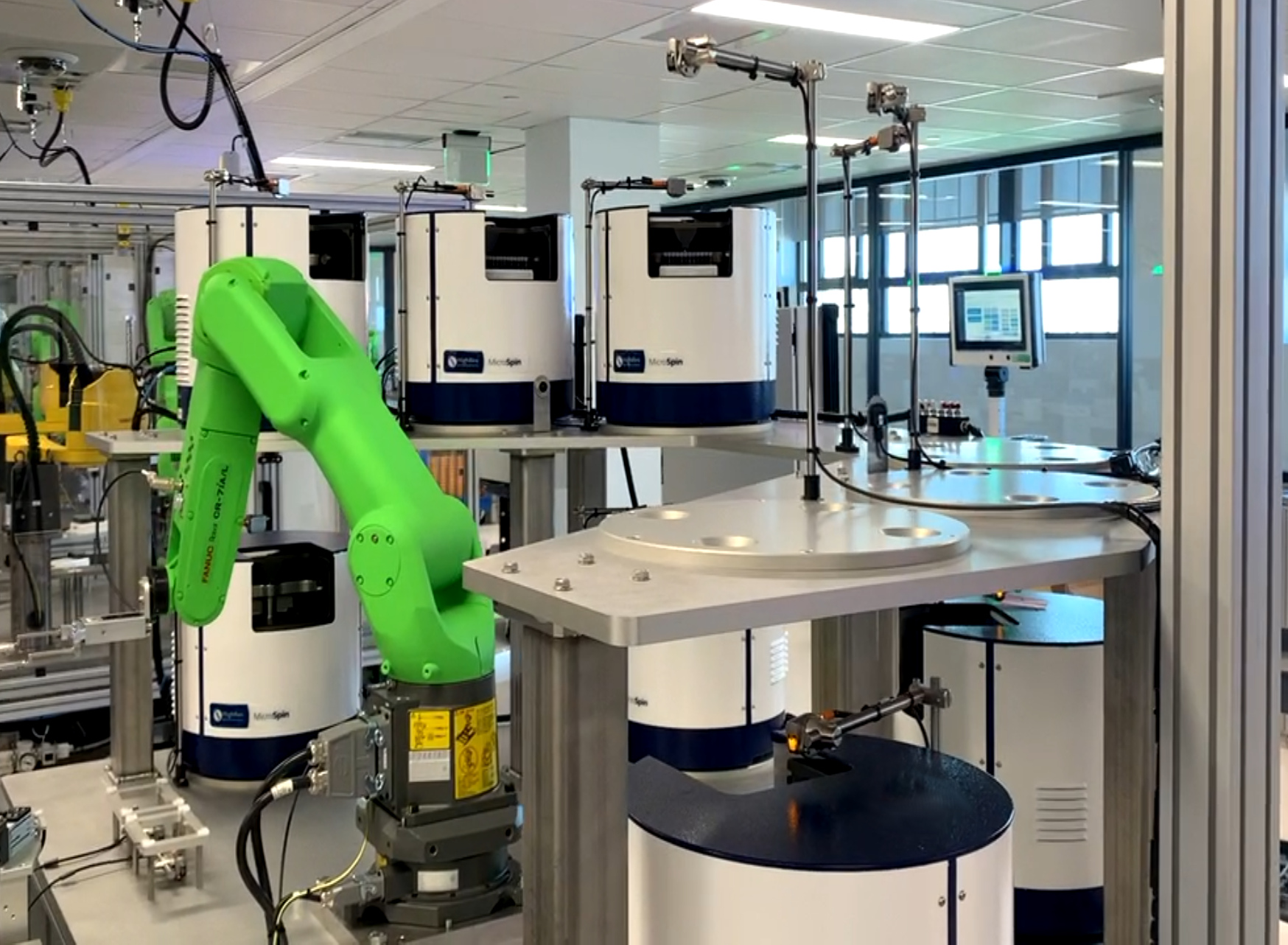
Summary
Re:Build DAPR Engineering was tasked with creating an automated biotech testing laboratory. This case study explores the work done on the centrifuge station of this automated testing line.
Location: Boston, MA
Product: Automated Biotech Testing Laboratory – Centrifuge Station
Industry: Healthcare
Timeframe: 9 to 10 months
Background
A customer contracted Re:Build DAPR to create an automated biotech testing laboratory. Part of this transformative initiative and laboratory process was the centrifuge station where samples are spun to separate components of the sample and ultimately provide a clearer and more concentrated sample, improving the sensitivity and accuracy of the testing process. Re:Build DAPR strategically designed this cell to transport PCR plates between industry-used centrifuges while ensuring manual labor was eliminated, throughput was optimized, and sample preparation was consistent. High-level challenges included integration between stations, changing biological protocols, and making design decisions for a process that was not completed previously or done manually by the client. Despite challenges, Re:Build DAPR successfully created an efficient, streamlined, custom design for the centrifuge cell that reduces processing time, improves sample throughput, and contributes to faster and more accurate test results.Challenges & Solutions
- Station and Automation Integration. The challenge in integrating the station and automation stemmed from the initial design, where the position of the centrifuges caused a singularity issue (indeterminate position) in the robot’s plate placement. This was resolved by adjusting the centrifuge position, allowing for smoother integration. The outcome was an optimized workflow, ensuring seamless cooperation between the station and the automation system.
- Biological Process Changes. Evolving changes in the biological process, including an increase in centrifuge system capacity, posed a challenge in maintaining optimal cycle times. The resolution involved extending the cycle time to accommodate the increased capacity, providing a redundant and adaptable solution. This ensured the system could effectively handle dynamic biological process changes, resulting in improved overall efficiency.
- Creating Custom Solutions. The challenge of creating custom solutions was met with the need for adjustments following the Finite Element Analysis (FEA). The resolution involved increasing the tube size for support columns to enhance system stiffness. This custom solution addressed the technical challenges, resulting in a more robust and effective system for the automated biotech testing laboratory.
Successes
The project concluded with notable success, showcasing significant improvements and increased throughput in the automated biotech testing laboratory. The integrated centrifuge station and automation reduced processing time, while adaptations to address biological process changes enhanced system flexibility. The result is a streamlined and efficient testing process, contributing to quicker and more accurate diagnostic test results.
